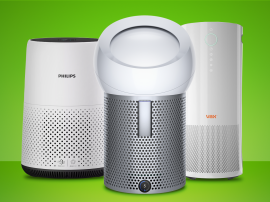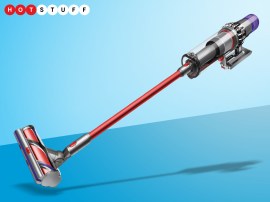The Dyson V15 Detect can see and hear invisible dust
It's got a frickin' laser

Dyson’s V15 Detect vacuum cleaner can see and hear invisible dust. Yes, you heard us correctly, the British innovations company has essentially helped solve Philip Pullman’s ‘His Dark Materials’ by fitting the V15 Detect (£599) with a green laser that shines an illuminating light on the dust you can’t see, plus an acoustic piezoelectric sensor and microprocessor that calculates the size and quantity of the particles being sucked up – at a rate of around 15,000 times a second. The data is then used by the 125,000rpm V15 Detect to decide whether to increase suction power or not. According to Dyson, the cord-free V15 Detect has been engineered to discover hidden dust as small as 10 microns. Developed by 370 engineers globally it uses a Dyson Hyperdymium motor to generate up to 230 air watts of suction and a five-stage filtration system is claimed to capture 99.97% of dust particles down to 0.1 microns. It’s also added a canterlivered, conical, anti-tangle brush bar so pet hair and lockdown locks don’t get caught around it. Available soon in the UK, it features a colour LCD display and replaces 2019’s V11 at the top of Dyson’s range. Until then you’ll just have make do with good old fashioned visible dead skin.



